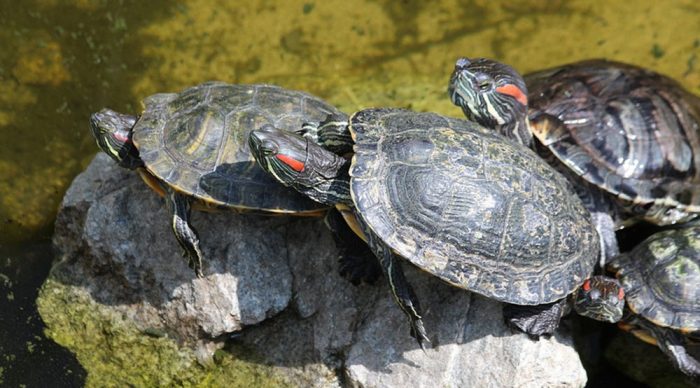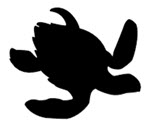Contents
The Red-eared Slider (Trachemys scripta elegans) is a semi-aquatic turtle widely recognized for the distinctive red stripe on each side of its head, resembling “ears.” Originally native to the southeastern United States, this species has become one of the most popular turtles in the pet trade, leading to its introduction and establishment in various habitats around the world. While admired for its adaptability and relatively easy care, the Red-eared Slider’s success outside its native range has also raised environmental concerns.
The Red-eared Slider is a fascinating species, appreciated by turtle enthusiasts for its distinctive appearance and adaptable nature. However, the ecological implications of its spread due to the pet trade highlight the importance of responsible pet ownership and the need for careful consideration before introducing non-native species into new environments. Conservation efforts and public education are essential to mitigate the environmental impact of this invasive species and protect native turtle populations.

Appearance
Adult Red-eared Sliders have a distinctive dark green to black carapace (shell) with yellow stripes, and their skin is striped with yellow and green, but it’s the red stripe behind each eye that most readily identifies them. Males are generally smaller than females, with longer claws and a more elongated tail. A fully grown Red-eared Slider can reach up to 12 inches (30 cm) in shell length, though females tend to be larger than males.
Native range
The Red-eared Slider is native to North America, to a region stretching from the Midwestern United States to northern Mexico. Some of the outer extremes of its native range are southeastern Colorado in the northwest, and Virginia and Florida in the east.
Habitat
The Red-eared Slider is believed to have originated in the area around the Mississippi River and Gulf of Mexico, where the climate is warm.
Red-eared Sliders are known for their hardy nature and ability to thrive in a variety of freshwater habitats. They prefer environments with abundant basking spots, such as logs or rocks, where they can sunbathe, and slow-moving or still water bodies like ponds, lakes, marshes, swamps, and slow-flowing rivers and streams. These turtles are ectothermic, relying on external sources of heat to regulate their body temperature, making basking an essential part of their daily routine. Red-eared Sliders often congregate to sunbath together, and will sometimes even climb on top of each other to form a pile.
The Red-eared Slider habitat must contain plenty of aquatic plants for the turtles thrive, since this is the main food for adult specimens.
Red-eared Slider are known for their docile nature but can be skittish and may dive into the water when approached. They are strong swimmers and spend a significant amount of time in water, although they do require access to dry land for basking and egg-laying.
Diet
Red-eared Sliders are omnivorous, with a diet that changes as they age. Juvenile sliders tend to consume more animal protein, feasting on a diet comprised largely of insects, small fish, and aquatic invertebrates. As they mature, their diet shifts to include a greater proportion of plant matter, such as aquatic vegetation and algae. In captivity, their diet of fresh food can be supplemented with commercially available turtle food, which is formulated to provide balanced nutrition.
Reproduction
Red-eared Sliders reach sexual maturity based on their size rather than age, typically around 2-4 years for males and 5-7 years for females. Breeding season occurs in the spring and summer, during which females lay eggs in nests dug into soft soil. A female can lay multiple clutches of eggs in a single season, with each clutch containing 4-23 eggs. The eggs incubate for 60-90 days, with the temperature of the nest determining the sex of the hatchlings; warmer temperatures tend to produce females, while cooler temperatures produce males.
Brumation
Red-eared sliders will brumate instead of hibernate. They stay in the water and become largely inactive during the brumation period, but can now and then rise to the surface to breath and get some food. How serious the brumation is can vary, depending on the circumstances.
In its native range, this trutle usually brumate from October to March or April, depending on the conditions. When the temperatures fall below 10 °C (50 °F), the turtle seeks out the bottom of a pond, shallow lake or similar, and rests there. It enters a state of sopor and will not need to eat or defecate, and its heart rate, metabolic rate and breathing frequency becomes very slow. It will produce ATP from glycolysis, and the lactic acid produced in the body will be buffered by alkaline minerals in the shell to prevent acidosis.
Occasionally, brumating Red-eared sliders have been found out of the water, e.g. under banks and rocks, and in hollow tree stumps.
When Red-eared sliders are kept as pets indoors, it is not necessary for them to brumate. As a pet owner, you can make sure that the temperature stays warm enough year round and give the turtle food to eliminate the need for brumation.
Environmental impact
Red-eared Sliders have been released into the wild by pet owners unable or unwilling to care for them, leading to established populations in areas outside their native range. In many of these regions, they are considered a problematic invasive species, competing with native turtles for food and basking sites and potentially spreading diseases. Their adaptability and generalist diet allow them to thrive in diverse environments, often to the detriment of local ecosystems.
